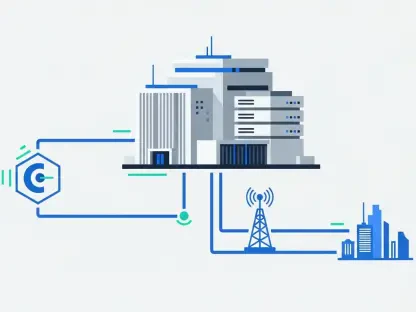Setting the Scene: The Broadband Boom and WOW’s Pivotal Role
Imagine a world where entire communities, newly built and brimming with potential, lack the digital backbone to connect to the modern economy—until now. WideOpenWest (WOW) has shattered barriers by bringing high-speed fiber internet to over 100,000 homes in greenfield markets, areas previously untouched by broadband infrastructure. This achievement signals a transformative moment in the U.S. broadband industry, where the race to close the digital divide is accelerating. This market analysis dives deep into the trends driving fiber expansion, evaluates WOW’s milestone within the competitive landscape, and projects the future trajectory of connectivity in underserved regions. The purpose is to uncover actionable insights for stakeholders navigating this dynamic sector, highlighting the economic and social stakes of such expansions.
Dissecting the Fiber Market: Trends, Data, and Competitive Dynamics
Greenfield Growth: Unpacking WOW’s 100K Home Milestone
The broadband sector is witnessing an unprecedented push into greenfield territories—newly developed areas without existing internet infrastructure—and WOW stands at the forefront with its connection of over 100,000 homes across Michigan, South Carolina, and Florida. This figure, which includes 80,000 previously targeted locations, showcases a deliberate focus on scalability, with plans to reach 400,000 homes in the coming years. Data from industry reports indicates that fiber-optic networks, unlike traditional broadband, offer superior speed and reliability, positioning WOW’s rollout as a critical driver of digital inclusion. Yet, the high costs of laying fiber in remote or low-density areas remain a hurdle, raising questions about long-term sustainability without strategic funding.
Funding Models: Privatization and Public-Private Synergies
Financial mechanisms underpinning fiber expansion reveal a complex interplay of private investment and public support. WOW’s trajectory is notably shaped by a $1.5 billion privatization deal with DigitalBridge Group and Crestview Partners, expected to finalize soon. This shift could inject fresh capital to accelerate growth but also risks prioritizing profitable markets over underserved ones if investor goals dominate. In contrast, competitors like Charter’s Spectrum leverage public funding, such as a $3.1 million grant from the NTIA’s Broadband Infrastructure Program, to expand to over 5,100 locations in Scott County, Kentucky. This diversity in funding models illustrates a broader market trend: a hybrid approach is often necessary to balance scale with equity in broadband deployment.
Regional Nuances: Tailoring Fiber Rollouts to Local Realities
Geographic diversity in broadband projects highlights the need for customized strategies across the U.S. market. While WOW targets expansive greenfield regions on a large scale, smaller players like C Spire focus on niche markets, connecting just 2,000 homes in Tate County and 1,000 in Tylertown County, Mississippi, with completion anticipated shortly. Meanwhile, GoNetspeed’s $7 million initiative in Stratford, Connecticut, supported by Oak Hill Capital, aims to serve 12,400 suburban homes and businesses. These varied approaches underscore a critical market insight: terrain, population density, and local regulations often dictate deployment pace and cost, challenging the assumption that rural areas are always the most difficult to connect.
Emerging Technologies: Catalysts for Cost Efficiency
Technological innovation is reshaping the economics of fiber deployment, offering a glimpse into future market efficiencies. Automated fiber installation tools and advanced networking equipment are slashing labor and material costs, enabling providers like WOW to scale operations without proportional budget increases. Industry analyses suggest that such advancements could reduce per-home connection costs by up to 20% over the next few years, a game-changer for expansive projects. However, adoption of these technologies varies across providers, with larger firms often better positioned to invest upfront, potentially widening the gap between major players and smaller regional ISPs in competitive markets.
Policy and Economic Shifts: Steering the Broadband Landscape
Government policies and economic incentives are pivotal forces guiding the broadband sector’s growth. Federal programs, alongside state-level initiatives, continue to channel funds toward closing connectivity gaps, as seen with Spectrum’s NTIA-backed project. Economically, the influx of private equity—evident in WOW’s privatization—signals robust investor confidence in fiber as a long-term asset, though it introduces volatility if short-term returns are prioritized. Looking ahead, regulatory updates expected between 2025 and 2027 could redefine funding priorities, potentially favoring rural expansions or mandating affordability measures, which would directly impact market strategies for ISPs of all sizes.
Projecting the Future: Fiber Coverage and Market Evolution
The trajectory of the U.S. broadband market points toward exponential growth in fiber coverage, with projections estimating that 80% of households could have access by the end of the decade if current momentum persists. WOW’s ambitious target of 400,000 homes aligns with this trend, positioning the company as a key player in greenfield expansion. However, disparities between urban and rural connectivity remain a looming challenge, with rural markets often requiring greater subsidies to offset lower revenue potential. Competitor strategies, such as Spectrum’s hybrid funding model, suggest that blending public grants with private investment will likely define the next phase of growth, creating a mixed landscape of opportunity and risk.
Market analysts anticipate that consumer demand for high-speed internet will continue to surge, driven by remote work, online education, and streaming services, further pressuring ISPs to expand. Smaller providers like C Spire may carve out niches in specific communities, while larger entities like WOW could dominate through sheer scale. A critical variable is the pace of technological adoption—firms that integrate cost-saving innovations early stand to gain a competitive edge. Additionally, evolving consumer expectations around pricing and service quality will shape market dynamics, pushing providers to balance profitability with accessibility in their expansion plans.
Reflecting on Insights: Strategic Paths Forward
Looking back, this analysis unpacked WOW’s milestone of connecting 100,000 greenfield homes, situating it within a vibrant tapestry of market trends, funding models, and regional challenges. The examination revealed how technological and policy shifts influence the broadband sector’s direction, while competitive dynamics underscore the diversity of approaches to connectivity. For stakeholders, the path forward involves prioritizing scalable yet community-tailored strategies, leveraging innovations to curb costs, and advocating for balanced policies that ensure rural areas are not left behind. ISPs, investors, and policymakers need to collaborate on hybrid funding frameworks to sustain momentum. Ultimately, the focus shifts to fostering partnerships that guarantee high-speed internet becomes a universal standard, paving the way for equitable digital access across the nation.









